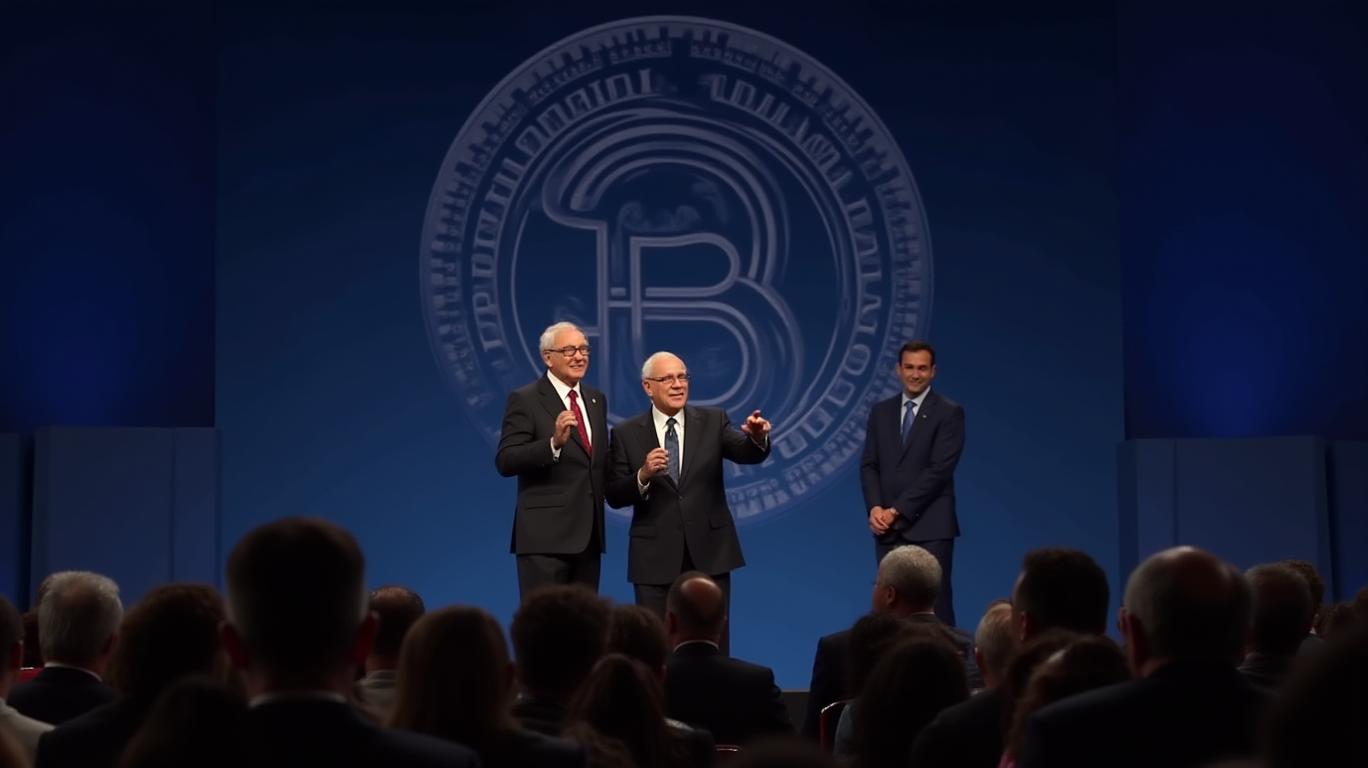Buffett's Berkshire at 60: A Legacy of Resilience and Adaptation
The Berkshire Hathaway annual shareholder meeting in 2025 marked Warren Buffett’s 60th year at the helm, a milestone underscored by record attendance and a renewed focus on the company’s enduring principles. As the 94-year-old Oracle of Omaha reflected on his legacy, the event highlighted both the challenges of Berkshire’s size and the strategies underpinning its future.

The Numbers Behind the Narrative
The meeting’s scale alone was staggering. Attendance surged to 19,700, a 21% increase from 2024, while vendor sales broke records:
- Sees Candy hit $317,000 in sales, a 12% jump.
- Brooks Running set an all-time high of $310,000, with 3,000 pre-registered volunteers.
- Jazwares doubled sales to $250,000, underscoring Berkshire’s cultural pull.
The 60th-anniversary book, Berkshire Hathaway’s 60th Anniversary, became a symbol of this momentum. Authored by former employee Carrie Sova, it sold 4,400 copies on its first day. A signed limited edition raised over $148,000 for the Stephen Center, with Buffett matching the proceeds—a nod to his belief that wealth should serve society.
The Japan Gambit and Buffett’s Global Vision
Buffett’s long-term bet on Japan—$20 billion in five trading companies—took center stage. Despite the Bank of Japan’s potential rate hikes, Buffett dismissed concerns:
> “We’re in it for 50 years or forever.”
Greg Abel echoed this, noting partnerships could unlock “very large opportunities.” This reflects Buffett’s core philosophy: value investing requires patience, not panic.
Cash Reserves: A Strategic Safety Net or Missed Opportunities?
Berkshire’s $347 billion cash pile sparked debate. Critics argue it’s a missed chance to deploy capital, but Buffett defended it as a “strategic reserve”, not a leadership transition ploy.
> “We’re ready for fat pitches, but they’re rare.”
This aligns with Berkshire’s historical approach—waiting for undervalued assets. The cash stash dwarfs the S&P 500’s average, yet Buffett’s track record justifies restraint: since 2000, BRK.A has outperformed the index by 280%.
Leadership Transition and the "Enemy of Performance"
Buffett acknowledged Berkshire’s size as an “enemy of performance”, but Abel’s global expertise offers hope. Abel’s role in expanding Japanese ties and his hands-on management style signal continuity. Shareholders took comfort in Buffett’s assurance:
> “The prospects of Berkshire will be better under Greg’s management than mine.”
AI’s Role in Insurance: Caution Over Hype
Ajit Jain tempered enthusiasm for AI in underwriting, emphasizing risk-aware investment over tech-driven gambles:
> “We’ll use AI where it’s proven, not where it’s promised.”
This pragmatism aligns with Berkshire’s avoidance of speculative tech bubbles—a lesson from the 2000 dot-com crash.
Conclusion: A Blueprint for the Next 60 Years
Buffett’s legacy is clear: long-term thinking, disciplined capital allocation, and philanthropy are Berkshire’s pillars. Despite its $700 billion market cap, the company’s ability to adapt—whether through Japan’s trading firms or Abel’s leadership—positions it to thrive.
Investors should note two takeaways:
1. Berkshire’s cash reserves are a strategic asset, not a liability. Its 20-year track record of outperforming the S&P 500 by 280% validates patience.
2. Greg Abel’s leadership will test Buffett’s model in a digitized world, but his alignment with core principles offers stability.
As Buffett steps back, Berkshire’s future hinges on balancing innovation with its founder’s wisdom—a tightrope Abel seems poised to walk. For shareholders, the message is unchanged: stay the course, and let time work its magic.


_442a2dcc1749832873286.jpeg)
_e68fac6d1749831664430.jpeg)






